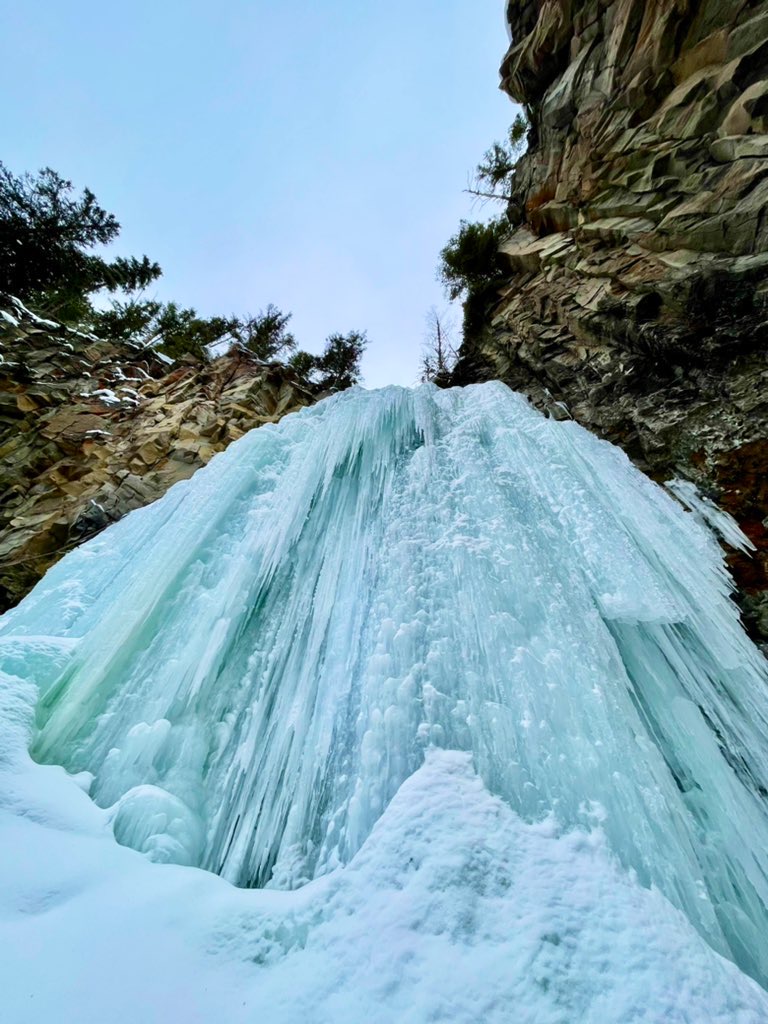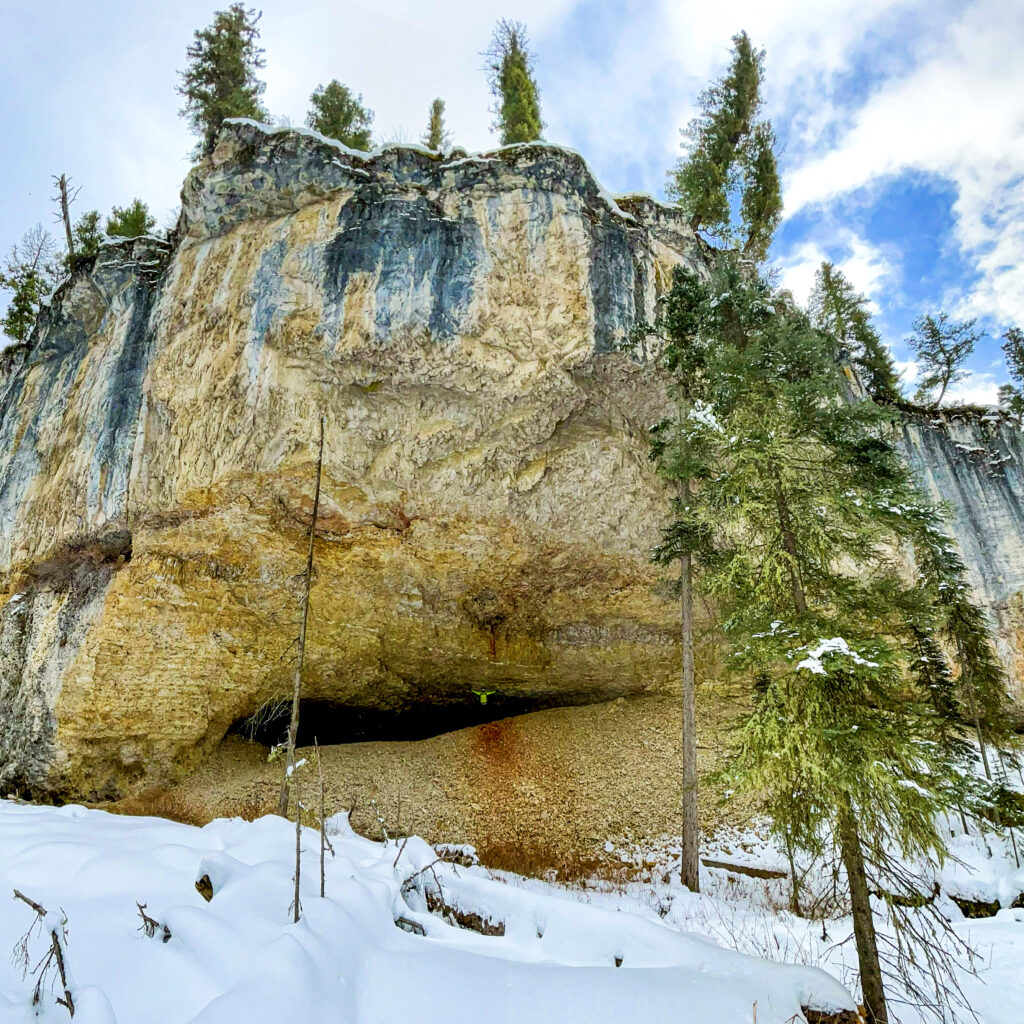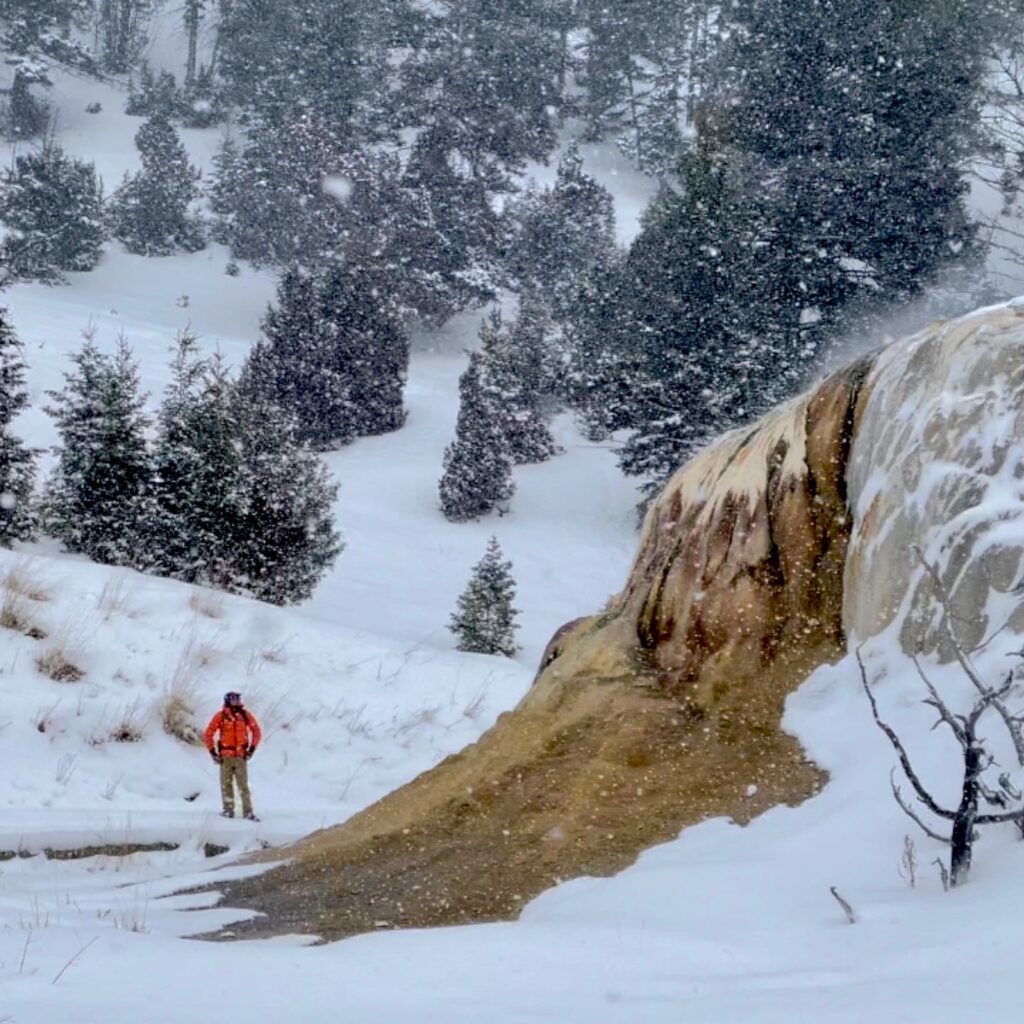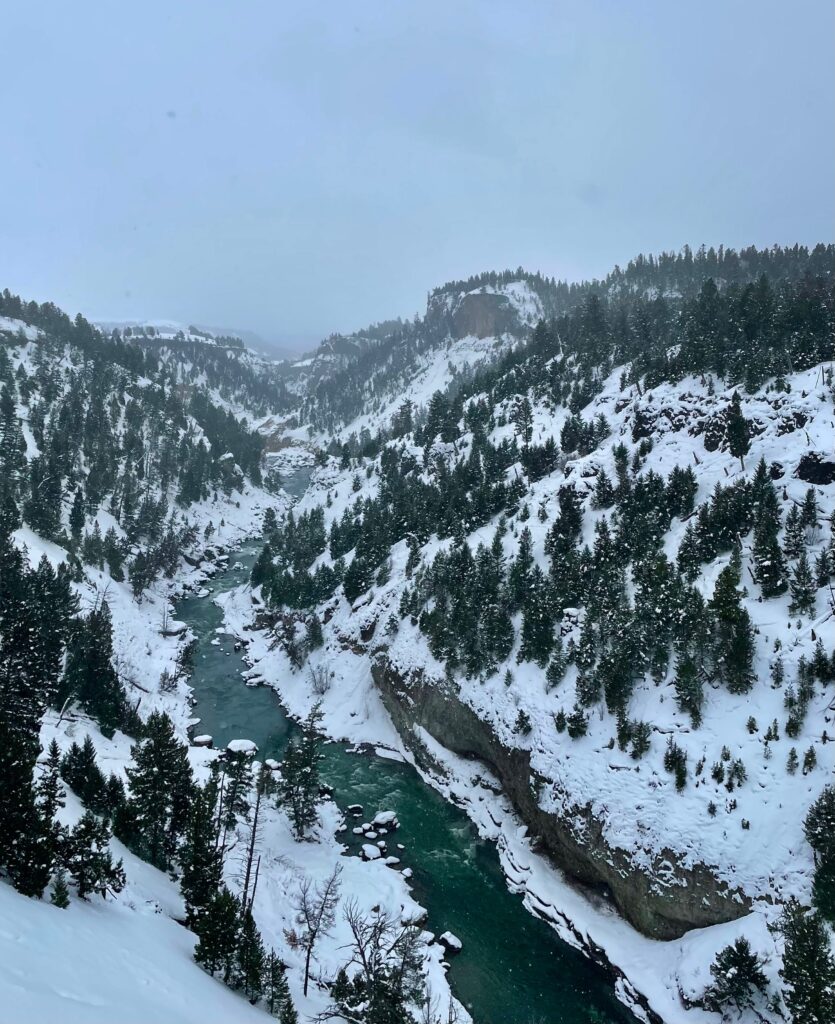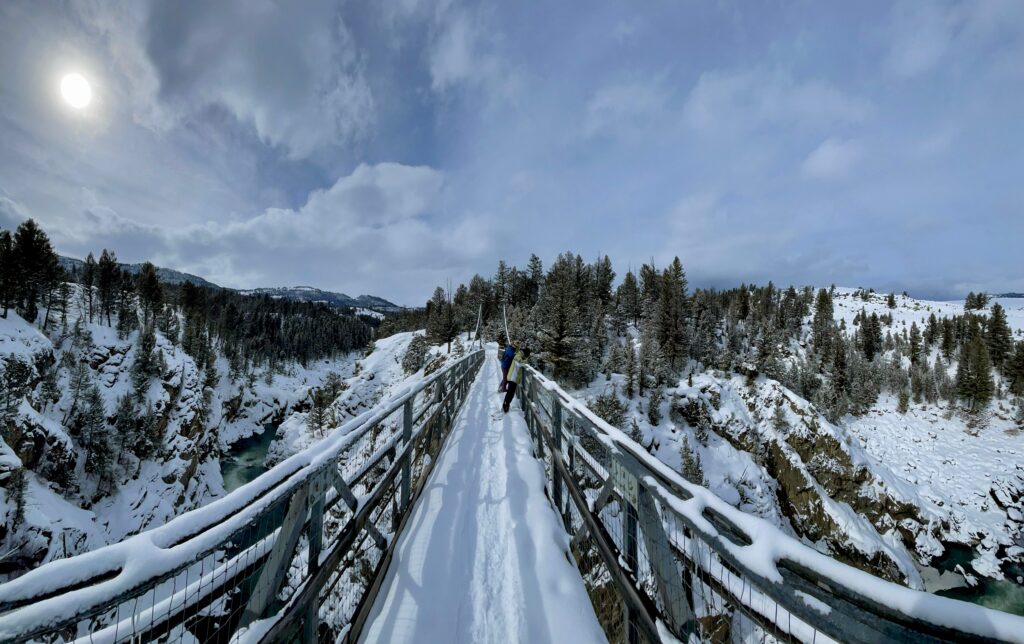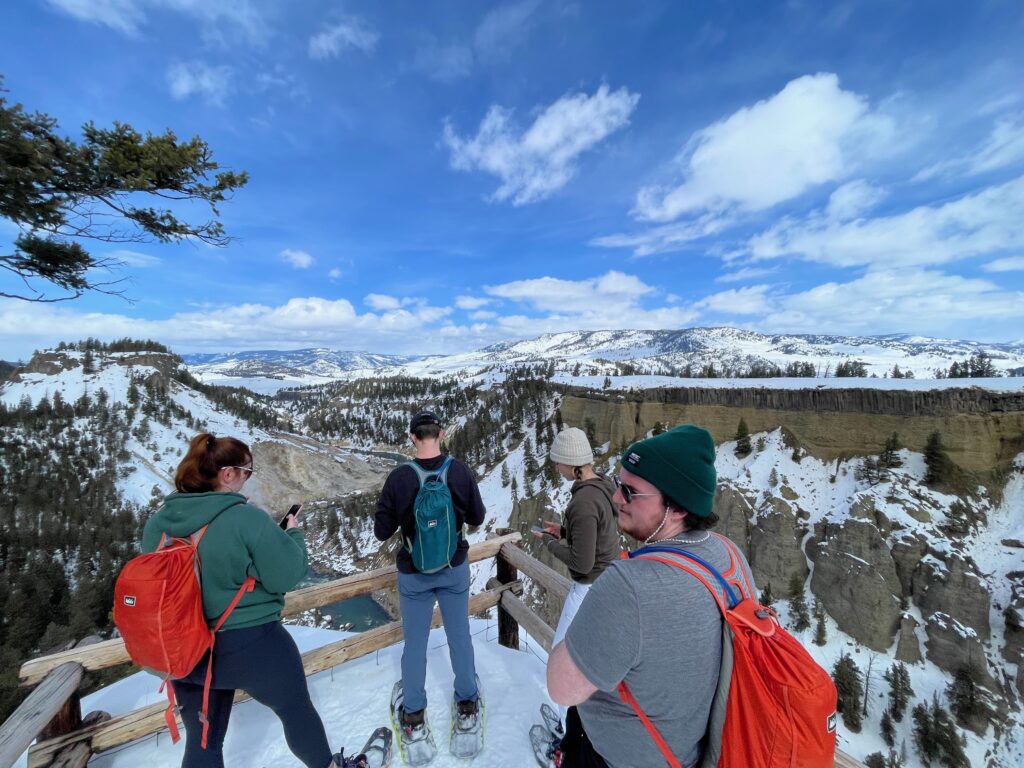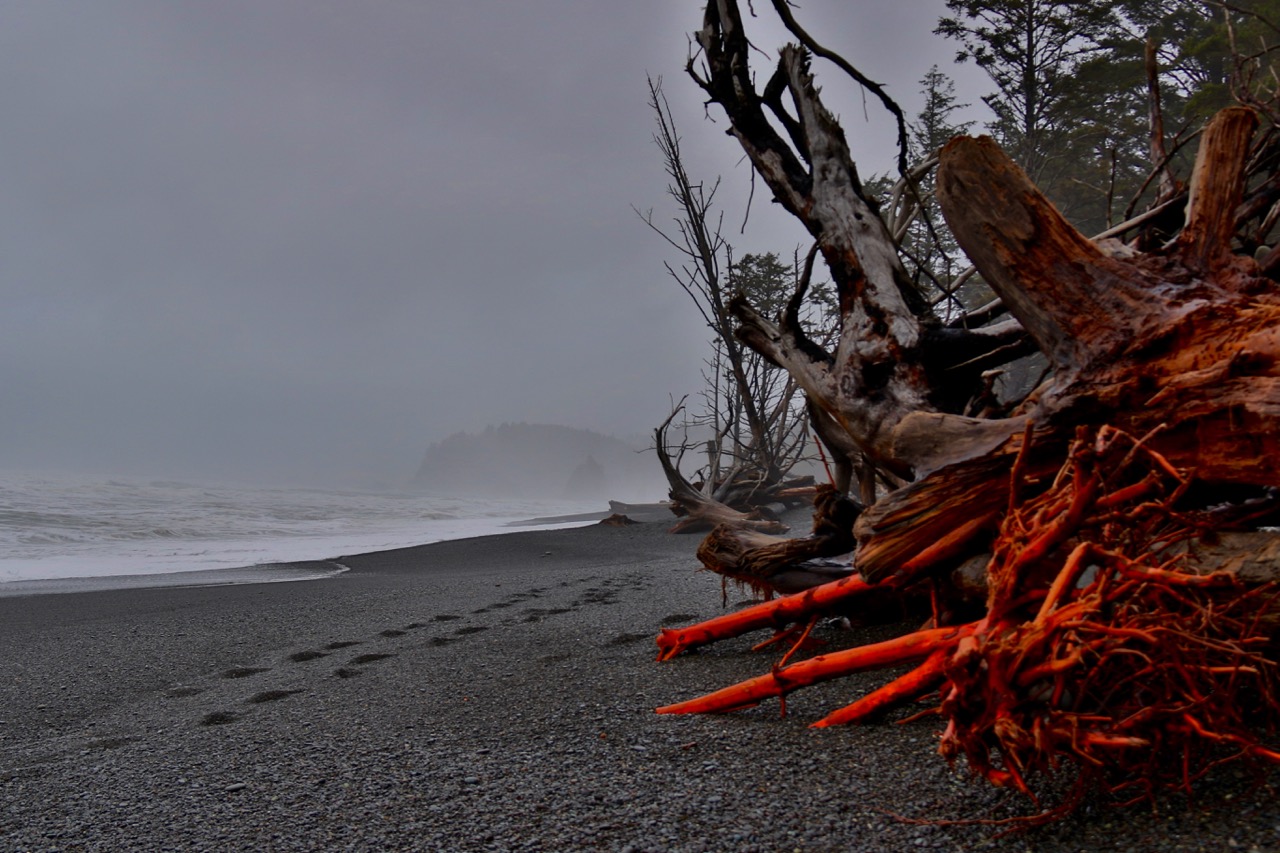Yellowstone National Park transforms into a winter wonderland each year, captivating adventurers with its serene landscapes and ethereal beauty. When the temperature drops below freezing, the park takes on a magical quality, with fresh snow sparkling as the sun hits the prairie, delicate hoarfrost clinging to the plants, and the brilliant browns of a bison’s face becoming covered in ice from their warm breath. While a lot of this can be seen from the car or at pullouts, there is nothing quite as amazing as seeing it while on foot.
Snowshoeing and hiking during the winter in Yellowstone offers a unique and immersive experience that few ever see. However, the promise of experiencing this enchanting beauty comes with the necessity for thorough winter preparedness. Hikers and snowshoers who hope to venture into the park’s snowy expanses need to understand the challenges of being prepared for frigid temperatures and potentially treacherous trails. You’ll need a heightened level of readiness and the right gear to keep you safe and maximize the enjoyment of an outdoor adventure. If the idea of a winter trek on foot in Yellowstone intrigues you, read on- I’ll be sharing some of my essential tips and strategies to ensure a safe and unforgettable winter exploration of Yellowstone National Park.
Don’t feel comfortable snowshoeing in Yellowstone on your own?
You are in luck! I am a licensed guide in the park and offer private snowshoeing adventures for all levels. Snowshoes included!
Why You Need to Experience The Winter Wonderland of Yellowstone on Foot
Before I dive into tips to stay safe and warm, I want to quickly tease you a bit with how incredible a snowshoe or winter hike in Yellowstone will be. Don’t get me wrong, winter in Yellowstone is incredible from the car. Some of my best memories are from a frigid day in the park, taking in the sights, sounds, and smells from the roadway and pullouts.
Yet, the memories from being on foot are impossible to beat. I have been leading a tour and have heard a pack of wolves howls as the sun slowly descended. I have seen frozen rivers churn and groan as I walk along them. I’ve witnessed ice formations on frozen lakes that resemble flowers, and hoarfrost along remote creeks so delicate they melt with your breath. I have seen bison taking their last gasps of air, and have witnessed the strength and resiliency of flora and fauna survive despite the cold. I have watched waterfalls freeze, tracked wildlife of all shapes and sizes in freshly fallen snow, and found true happiness and bliss. I could go on and on but I will stop here.
I have had the most serene and peaceful moments of my life while traveling on foot in Yellowstone over the winter and I wish you have them too.
A Quick Overview of Essential Winter Gear
Now that you are hopefully longing for a winter snowshoe adventure in Yellowstone, this is the minimal gear you will need. When it comes to clothes, layers are the way to go. It is also better to be too warm and be able to take things off than to be too cold and not have enough on.
For the top, start with a thermal layer. Follow that up with a thin, breathable long-sleeve layer, with a warmer jacket over it. Cover that with a warm winter jacket and you will be good to go. You might even be too warm, especially when you start to move. However, having these layers will let you stay warm when you stop to take in the sights.
For the hands, I tend to go with a pair of liner gloves and then a much thicker and warmer pair of gloves. handwarmer packets are never a bad idea to bring along too.
For the head, most who trek outside like to wear a buff for the neck and face and a stocking cap for their head. Keep in mind that you lose a lot of body heat through your head and your hands can get extremely cold very fast if not protected.
For your lower half, you’ll also need to layer, unless you have amazing winter pants. Typically, the best way to layer is to get a thermal layer and then put a fleece-lined pair of pants over it. Snow overalls/bibs are also a great thing to wear. Keep in mind that when moving, your legs will be warm, and when you stop, they will cool down fast. For your feet, you’ll need proper winter weather shoes and warm socks, even when wearing snowshoes.
Always, always, always bring a backpack with you. Not one for each group, but one per person. In the backpack, bring extra food and a thermos (not a water bottle or water bladder) with extra water. There is a good chance your standard water storage devices used for hiking will freeze. You should also bring a change of socks and shoes for after the adventure and leave them in the car.
Always Check the Weather
Before heading out, you should always know what the weather should be for your adventure. While finding weather forecasts for specific regions in Yellowstone can be extremely difficult, there are a few ways to get somewhat accurate information.
My go-to forecast app is Weather Underground. It tends to be the most correct for the area and by checking each of the following, you can get a pretty decent idea of what the weather will be. Just know that anything beyond two or three days can change.
Here are the links for the weather in:
Another truly fantastic and underrated site is the Yellowstone Climate at a Glance page. Here, you can see snow maps, snow graphs, forecasts, stream temperatures, and more.
Planning Your Winter Adventure and Trail Recommendations
If you are hoping for a winter adventure in Yellowstone National Park, you have a few options.
Head into the interior with a snow coach tour, join a private, guided hike in the northern range, or head out on your own. I can’t speak to anything in the interior, but I am an expert on the north side of the park, which is open to everyone year-round.
Please do not attempt any off-trail travel in the park unless you are extremely skilled, experienced, and knowledgeable. The main trails should be decently traveled throughout the winter and the paths should be beaten down a bit. Anything off-trail could be extremely tough to go any distance at all.
While I could write a whole new paragraph recommending my favorite places to snowshoe in the northern range of Yellowstone National Park, I have already done that elsewhere. Here is the link to that article: https://outdoor-society.com/yellowstone-national-park-winter-hiking-and-snowshoe-tours-2023-2024/
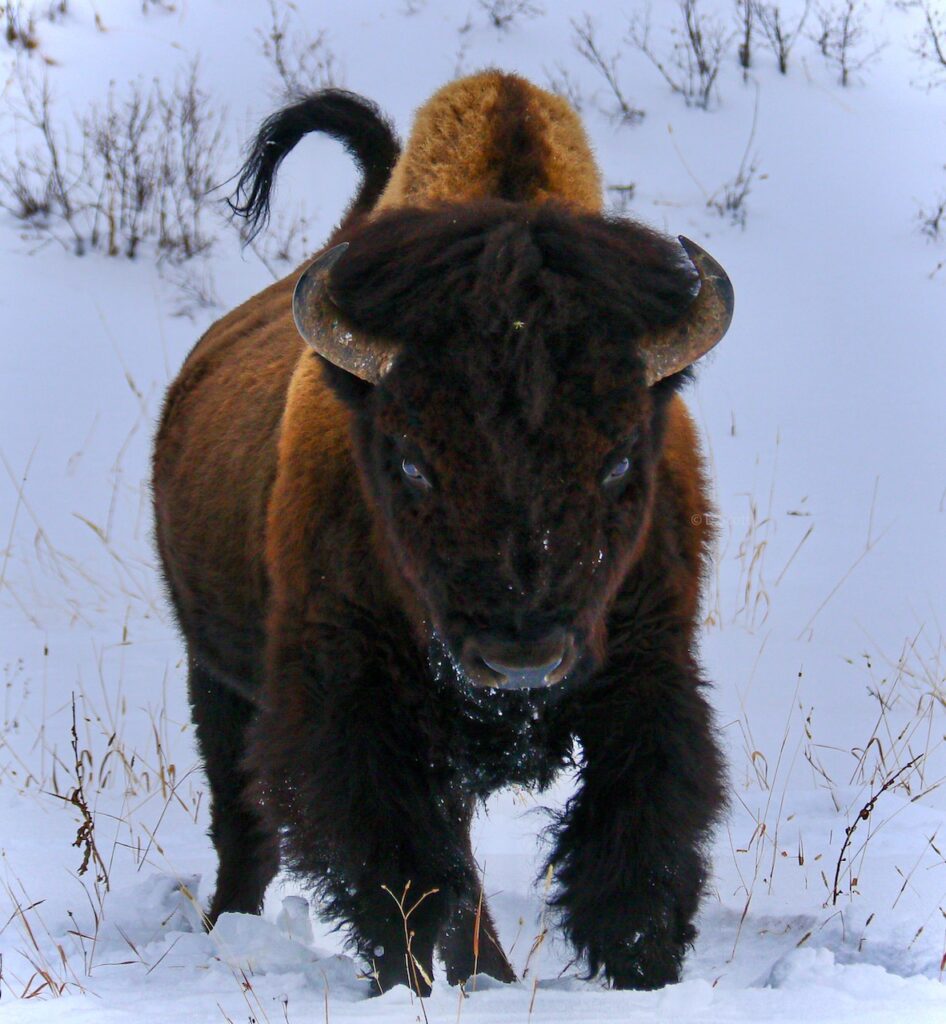
What to do When You Encounter Wildlife While Snowshoeing
Once you are out on a snowshoe adventure in Yellowstone, there is a very high likelihood you’ll encounter wildlife. The simple park rules for this are as follows:
Always make sure you keep at least 100 yards (91 m) between you and bears and wolves. Stay 25 yards (23 m) away from all other animals. If the animal moves closer to you, back away and give them space. Always maintain the appropriate distances.
Some real talk: If you encounter a herd of bison on a trail or path and they don’t look like they will be moving any time soon, you have two options. You can turn around and call it a day, heading for a different area, or work to hike off the trail and around them at a safe distance. Be warned that the second option will be much more difficult, as the minute you go off-trail, the snow can be deep and difficult to travel through.
I will stress this again- DO NOT APPROACH WILDLIFE. EVER.
Capturing Memories in the Cold
Finally, once you are out and about on a winter adventure in Yellowstone, you’ll probably want pictures or videos or something to remember it. While you should always bring your camera )or phone) with you, know that the colder the temperatures, the faster your battery will die.
For a cell phone, keep it close to your body so your body heat will help it stay warm. An outside pocket will not be a good idea. Also, keep your phone in airplane mode while disconnected from a power source. You won’t have much, if any service anyway, and your battery will drain as it searches for a signal.
For a DSLR, I tend to carry always have an extra battery with me. I also will pop the battery out of the camera and carry it close to my body (next to the spare battery and my cell phone) to limit the drain. For the camera itself, if you have a warm carrying case, great. If not, bring an extra coat or thermal and wrap your camera in that when it is in your backpack. You’ll still get a battery drain, but these should help a bit.
As Always
I provide wildlife watching and hiking guidebooks, as well as private guided trail tours all year round in Yellowstone National Park. I would love to show you around and have you fall even more in love with the beauty and serenity found Beyond the Boardwalks of Yellowstone National Park.

